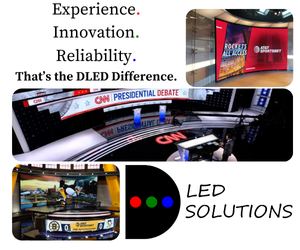Yospace’s Paul Davies on tackling ad delivery and measurement at scale

Weekly insights on the technology, production and business decisions shaping media and broadcast. Free to access. Independent coverage. Unsubscribe anytime.
As ad-supported streaming becomes more central to broadcasters’ monetization strategies, dynamic ad insertion (DAI) has moved from a niche technology to an essential part of the infrastructure. But according to Paul Davies, head of marketing at Yospace, stitching ads into a stream is just one piece of a much larger puzzle.

Yospace, which has focused exclusively on DAI since 2011, counts Fox, Tubi, DirecTV, ITV and Channel 4 among its customers. The company handles ad stitching for live, VOD and FAST channels, and has scaled rapidly to meet surging demand. In just over six months, its peak ad stitching volume – 6 billion ads served during the 2024 UEFA European Championship – has become a daily baseline.
“There’s a perception that dynamic ad insertion is simply the act of stitching ads into a stream,” Davies said in an interview with NCS. “But doing that seamlessly and at scale, especially during live events with millions of concurrent viewers, requires robust technical infrastructure and close coordination with the ad tech ecosystem.”
Scaling infrastructure to match streaming demand
Server-side ad insertion (SSAI), the method favored by Yospace, enables a smooth user experience by merging content and ads into a single stream before it reaches the viewer. But Davies cautions that stitching alone doesn’t guarantee delivery, especially at scale.
Prefetching, or pacing out ad calls in advance, has become a key area of development for the company.
“If you sell 100 percent of your ad inventory but don’t have the infrastructure to deliver it, that’s unfulfilled revenue,” he said. “It’s a bigger problem than people realize.”
As more platforms adopt FAST and VOD models alongside live streaming, customers increasingly turn to unified workflows. Using the same ad stitching approach across content types improves operational efficiency and consistency in user experience, Davies noted.
Measurement challenges on connected TV
Despite technical progress, measurement remains a sticking point, particularly for connected TV (CTV), where household-level viewing makes attribution more complicated.
Advertisers want confidence that an ad was not just served, but seen.
While server-side stitching ensures seamless playback, server-side measurement does not accurately track ad views. Yospace addressed this by developing a lightweight SDK to measure playback from the client side, but SDKs must be maintained across multiple endpoints.
Yospace is contributing to CMCD version 2, an emerging standard that allows players to report playback position using metadata. This will provide a broader measurement of ads across third-party endpoints.
“Any compliant player will be able to send a simple signal showing where the playhead is,” Davies said. “That opens the door to accurate measurement without requiring custom code on every platform.”
This capability is especially useful for syndicated content, where broadcasters may not control the playback environment.
Evolving standards, advanced formats and rising buyer expectations
As streaming platforms mature, new standards and ad formats are gaining traction, but they bring added complexity to ad delivery.
One area drawing increased attention is Server-Guided Ad Insertion (SGAI), which blends server-side and client-side execution. While still awaiting formal MPEG-DASH ratification, SGAI is viewed not as a replacement for server-side ad insertion (SSAI), but as an extension that aims for greater flexibility and support for emerging ad types.
Among those formats: picture-in-picture ads, L-shaped overlays and other interactive elements that alter the traditional viewing experience. Though technically feasible, these innovations depend on tight coordination between the video player, ad server and stitching engine.
“Whether it’s SGAI or advanced ad formats, the fundamentals don’t change,” Davies said. “You still need to prefetch effectively, scale your infrastructure and track what viewers are actually seeing.”
At the same time, advertisers are placing more emphasis on personalization, attribution and outcomes. That’s driving renewed focus on the basics, ensuring ads are delivered properly, measured accurately and optimized at scale.
“TV has thrived for decades on mass reach,” he said. “But digital reach is harder to execute. What matters now is maximizing the value of every ad spot, ensuring delivery and proving impact.”
While stream stitching remains central to monetization, advertiser expectations are evolving beyond simply delivering impressions. Brands now demand more visibility into how ads perform, how much was viewed, whether it drove engagement, and ultimately, what impact it had.
“Serious advertisers in the digital realm aren’t just looking for impressions anymore—they’re looking for outcomes,” Davies said. “They want to know if the ad was watched, how much of it was watched and whether it drove a response.”
These expectations are challenging in a fragmented connected TV environment, where user-level data is often limited and attribution remains imperfect. Davies pointed to growing interest in interactive formats, such as shoppable ads or clickable overlays, but emphasized that success with these innovations still hinges on solid delivery infrastructure and synchronization with the broader ad tech stack.
Buy-side pressure is also shaping monetization strategy across FAST and AVOD models. As advertisers prioritize addressability and ROI, streaming platforms must ensure that ad slots are not only filled—but filled efficiently and effectively.
“There’s a real gap between the growing advertiser demand and the streaming platforms’ ability to deliver against it,” Davies added. “It’s not just about getting the ad into the stream—it’s about making it count.”






tags
Advertising, Advertising Management, Broadcast Monetization, Connected TV, dynamic ad insertion, MPEG DASH, Paul Davies, Server-Guided Ad Insertion, Server-Side Ad Insertion, Shoppable Television, Yospace
categories
Advertising, Heroes, Streaming